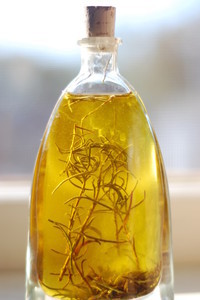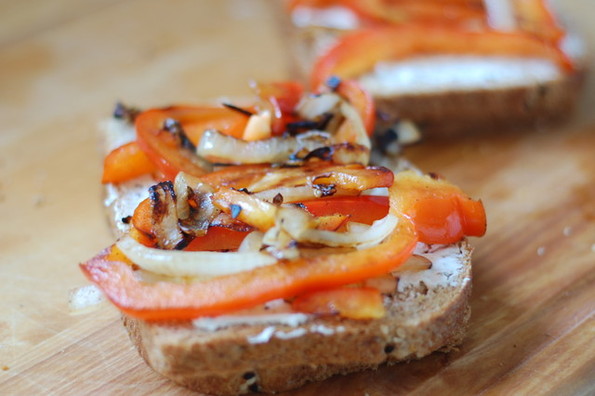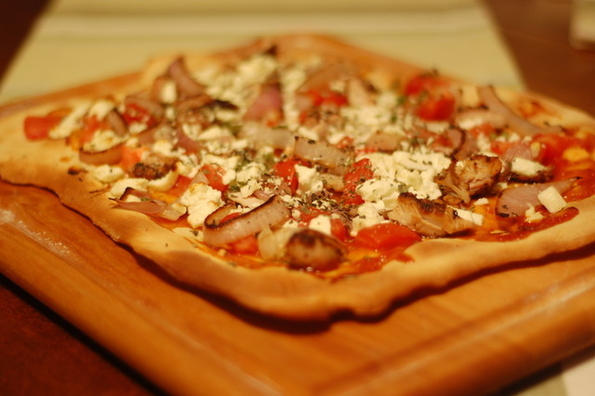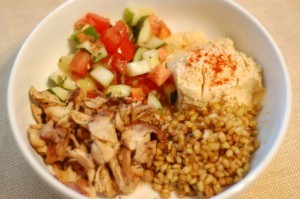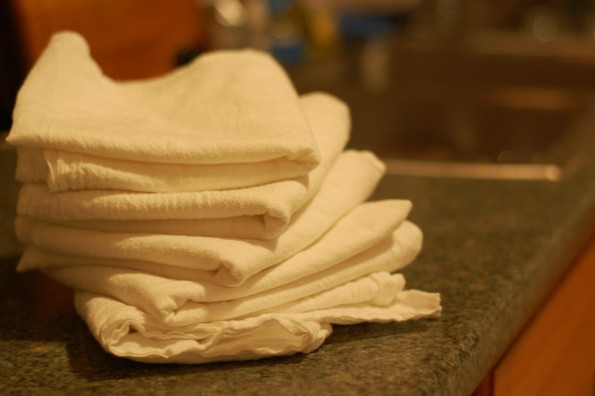I’ll admit — this one was kind of a fun experiment for me. My friend Brian was talking about some healthy cookies he made the other day that involved banana, and I figured since I’ve had a banana in the freezer for the past 2 months, I’d give the cookies a shot. I looked a few places for recipes, but they all seemed dubiously “healthy”, and I wanted something lightly sweet that went well as a breakfast or with some tea.
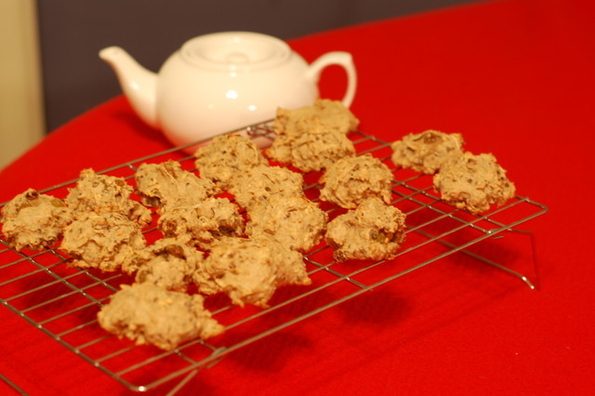
So I took a stab at throwing together some ingredients in my own recipe. I started by softening all the butter I had in the fridge, which was about 3 tablespoons, and creaming it with some rock-hard brown sugar from the pantry. I had to use a food processor since the beater didn’t play well with the hardened brown rocks, but then beat it as usual with the butter. To this I added the now-thawed, previously frozen banana (which has a vastly different texture than a never-frozen banana). The water in the banana didn’t mix with the fat in the butter, so I added an egg to act as an emulsifier and continued mixing.
Meanwhile, I toasted up 2 tablespoons of flax seed and then 1/3 cup of oatmeal in a cast-iron skillet and set them aside. I also rehydrated about 1/4 cup of golden raisins with boiling water in a small bowl.
To the egg mixture, I added whole-wheat flour, 2 tablespoons at a time, since I had no idea how much I’d need and wanted to make sure I didn’t over- flour. I was basically just looking for a cookie dough-like consistency. Ultimately I ended up adding 16 tablespoons (1 cup). I then added 1/2 tsp of vanilla, about 3/4 tsp of salt, and 1/2 tsp of baking powder, since they all seemed like good things to put in cookie dough. I mixed in the oatmeal, flax seeds and raisins, and had a respectable looking dough.
I baked them on a greased cookie sheet for about 15-20 minutes. The cookies themselves came out a bit more like scones than cookies, since the small amount of butter means they don’t spread out as much as cookies do (since there isn’t much butter to liquify). They were just about the right sweetness for me — on par with a scone, and the oatmeal and flax seeds gave a really good toasted flavor. In fact, overall, I’d say they were pretty much a cross between scones and cookies. However, if you want them more on the cookie side of things, try adding more butter and sugar. The end result was better than I expected, and will make a pretty good snack or breakfast.
Finally, if you do attempt the recipe, don’t be afraid to experiment! I happened to have the ingredients listed, but you could also try nuts, other fruit, chocolate, or whatever. If you’re doing something really crazy, just make a smaller batch, and then start over if they don’t come out.
Banana-Oatmeal-Flax Power Cookies
Ingredients:
- 3 Tbsp softenened butter
- 2 Tbsp brown sugar
- 1 banana (preferably frozen and then thawed)
- 1 egg
- 1 cup whole wheat flour
- 1/2 tsp vanilla
- 1/2 tsp baking powder
- 3/4 tsp salt
- 1/3 cup old-fashioned oatmeal
- 2 Tbsp golden flax seeds
- 1/4 cup golden raisins, rehydrated in boiling water
Preheat oven to 350 degrees. Toast oatmeal and flax seeds separately in skillet or oven. Cream together butter and brown sugar, and then add in remaining ingredients in order listed. The dough should end up the consistency of cookie dough — a bit sticky but not overly wet or dry. Form cookies onto greased baking sheet and bake 15-20 minutes, until cookies are brown around the bottom edges. Serve for breakfast, tea, or as a snack.
Originally posted April 23rd, 2010

